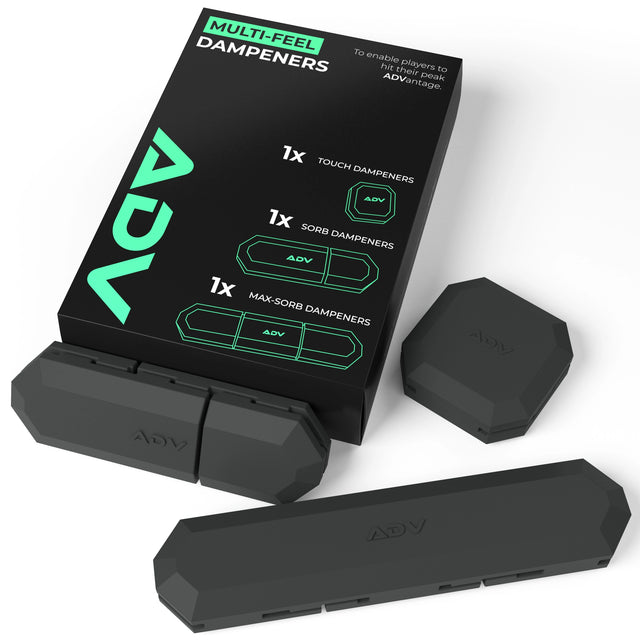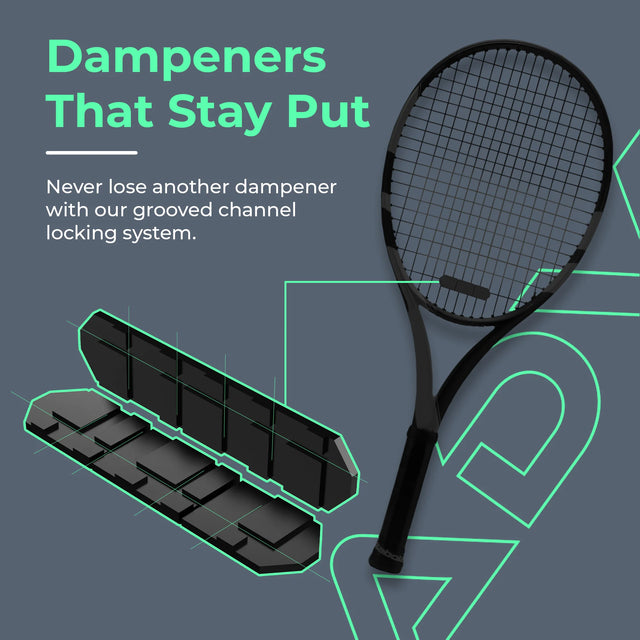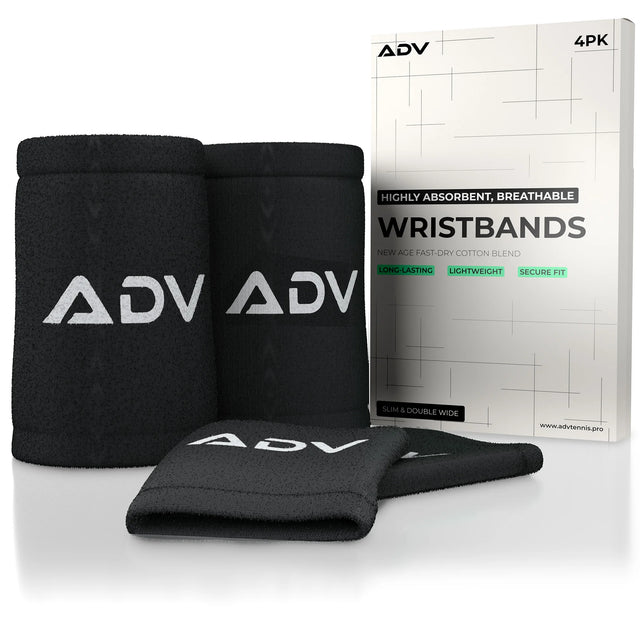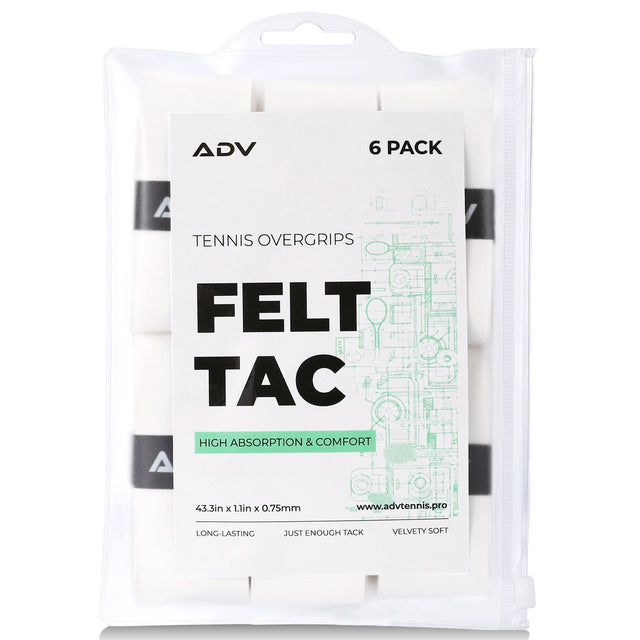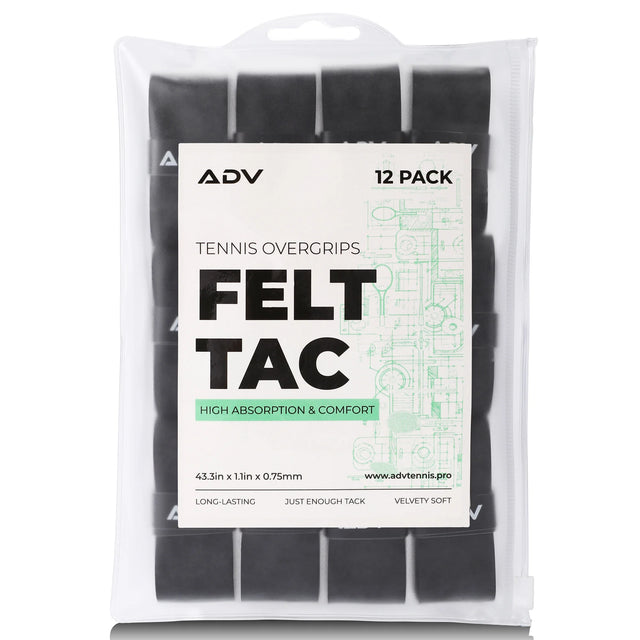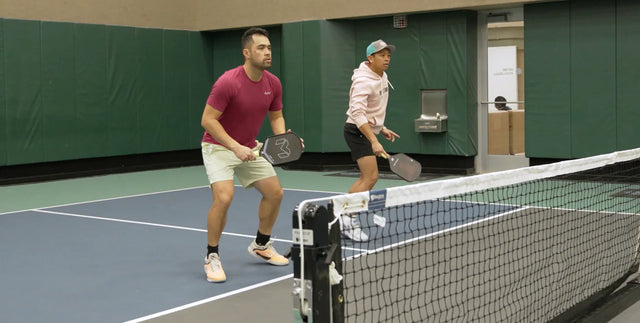Enhancing Your Game With Tennis Dampeners: A Quick Guide
Tennis dampeners are small but essential accessories for any tennis player looking to improve their game and protect their equipment. Typically made from rubber or silicone, these devices fit snugly between the strings of a tennis racket. Their primary role is to reduce the string vibrations that occur when the ball hits the racket, decreasing the "ping" sound and enhancing the feel of the racket during play. While small in size, their impact on play can be significant, making them a favorite among both amateurs and professionals.
Types of Tennis Dampeners
Button Dampeners
These small, circular devices easily snap between the main strings near the racket's throat, providing an effective vibration-dampening effect. They are favored for their simplicity, offering immediate results. Players often prefer button dampeners because they can be quickly added or removed, allowing for seamless adjustments between games. They are also available in a variety of designs, from plain colors to custom logos, adding a personalized touch to one's tennis gear.
Worm Dampeners
Worm dampeners are longer than button types and thread through several strings to provide a more comprehensive dampening effect. By covering a greater area, worm dampeners are particularly effective at reducing a broader range of vibrations, which can be beneficial for players who experience discomfort or have had previous injuries. Their design is slightly more complex, requiring a bit more time to install correctly, but the added vibration control they offer makes them a valuable asset for serious players focused on comfort and precision.
Custom Design Dampeners
For those looking to stand out on the court, custom-designed dampeners offer a unique opportunity. A shock absorber for tennis can be tailored to display specific logos, patterns, or even personal messages. They function just as effectively as standard dampeners but with the added benefit of personalization. Whether for individual use, team identity, or promotional purposes, custom dampeners can elevate the aesthetic appeal of your setup.
Suitability for Different Playing Styles
Aggressive players who hit the ball hard might benefit from a robust tennis racket dampener that can handle significant vibrations. In contrast, a player who prioritizes control and finesse may opt for a dampener that offers a subtler feel. Understanding the nuances of how different dampeners affect play can help tailor your equipment to complement and enhance your natural style, potentially giving you an edge in competitive situations.

Selecting the Right Tennis Dampener
Factors to Consider
The type of strings used, the string tension, and the specific racket design can all influence the effectiveness of a dampener. Players should also consider the weight and size of the dampener, as these can affect the racket’s balance and swing weight. Furthermore, the aesthetic aspect, although less important in terms of performance, might be significant for players who value the visual aspect of their gear.
Comfort and Injury Prevention
A well-chosen racket shock absorber not only improves comfort but also helps prevent injuries related to repetitive stress and vibration. This is especially vital for players who train frequently or compete at high levels, as the cumulative effect of repeated shocks can lead to conditions like tennis elbow. A dampener that efficiently absorbs shocks will reduce these risks, allowing players to enjoy a safer and more comfortable playing experience. For those struggling with tennis elbow, selecting an anti-vibration tennis racket setup is critical. A dampener that offers superior vibration reduction can be a significant aid. Medical professionals and tennis coaches often recommend softer dampeners that provide maximum shock absorption. These specialized types can be particularly effective in alleviating symptoms of tennis elbow, enabling players to continue enjoying the game while managing their condition effectively.
Best Tennis Dampeners on the Market
Customer Experiences and Reviews
When it comes to finding the best dampener for tennis racquets, expert reviews and player testimonials play a crucial role. High-quality dampeners often receive praise for their ability to significantly reduce racket vibrations and enhance the overall feel of the game. Some of the top-rated dampeners offer a blend of durability, effective vibration reduction, and ease of use, making them popular choices among both recreational and professional players.
Material and Durability
Most high-quality dampeners are made from silicone or special rubber composites, which are both resilient and flexible. These materials ensure that the dampener not only withstands the constant impact of the ball but also maintains its elasticity and effectiveness over time, providing players with consistent performance and reliability.
Ease of Installation
Installing a tennis dampener is generally a simple task, but the ease of installation can vary depending on the type of dampener you are using. Here is a guide on installing most button and worm dampeners:
- Locate the Ideal Spot: The placement of the dampener is crucial for its effectiveness. For button dampeners, the optimal location is usually in the lower middle part of the string bed, close to the throat of the racket. This position helps in maximizing the dampener's ability to absorb shock. For worm dampeners, they should be threaded through several strings more centrally to evenly distribute the dampening effect across a larger area of the string bed. Choosing the right spot ensures the dampener functions efficiently.
- Prepare the Dampener: Before installing the dampener, it is essential to ensure it is clean and free of any dirt or debris. Any foreign particles on the dampener might affect its snug fit between the strings and could reduce its effectiveness in vibration absorption. This step is straightforward but critical, as a clean dampener will perform better and last longer. Ensuring that the dampener is in good condition before installation can prevent the need for frequent replacements.
- Install the Dampener: The installation process differs slightly between the two types of dampeners. For button dampeners, the installation involves pressing it firmly until it snaps securely between the strings. This type is preferred by players for its ease of installation. For worm dampeners, thread them through the designated strings and pull gently until it is securely in place. While worm dampeners take a bit more effort to install, they often provide more extensive vibration dampening due to their larger contact area with the strings.
- Adjust if Necessary: After the initial installation, it's advisable to hit a few balls to test the dampener’s performance. Based on this, you might need to make slight adjustments to the dampener's position for optimal effectiveness. This fine-tuning is essential as it ensures that the dampener is performing to its fullest potential, helping to reduce racket vibrations and improve the overall feel of the racket during play.
While installing a tennis dampener is not a complex task, paying attention to the details can significantly enhance its effectiveness. Proper placement, preparation, and installation can make a notable difference in the comfort and performance of your tennis racket.

Where to Buy Tennis Dampeners
Online Shopping Tips
Purchasing tennis dampeners online offers convenience and a broader selection than what might be available in local sports stores. When shopping online, it's crucial to verify the authenticity of the product and the reliability of the seller. Look for well-established sporting goods stores or direct purchases from manufacturer websites. Check for secure payment options and clear return policies. Identifying reliable retailers is key when looking to buy tennis dampeners. Trusted sporting goods stores, whether online or physical, should offer products from well-established brands. These retailers typically offer good customer support and warranty services, ensuring that any issues that arise can be resolved efficiently.
Cost and Value Considerations
When shopping for a tennis racket dampener, the process involves more than just picking the cheapest option available; it’s about finding the best value for your investment. Consider the following aspects to ensure you are making a cost-effective purchase:
- Initial Purchase Price: The cost of tennis racket dampeners varies widely, depending on the brand, quality, and features offered. It’s essential to compare the prices across different retail platforms to secure the best deal. Sometimes, a higher price might reflect superior quality or additional features such as enhanced vibration absorption or special materials. Evaluating the cost against the performance enhancements these features provide is crucial for making an informed decision.
- Bulk Buying Options: For tennis clubs or players who go through many dampeners, considering bulk buying options can be very cost-effective. Many retailers offer discounts for large-volume purchases. This approach is particularly beneficial for frequent players or clubs that need to provide dampeners for several members, reducing the overall cost per unit significantly.
- Seasonal Sales and Promotions: Leveraging seasonal sales and promotional events is a savvy strategy to minimize expenses. Sports equipment retailers often have significant markdowns during the off-season or around major shopping days like Black Friday. Planning purchases around these times can lead to substantial savings, decreasing the total investment needed to acquire high-quality equipment.
- Shipping Fees: When purchasing dampeners from online platforms, especially international ones, it’s crucial to consider the shipping fees. These fees can sometimes add a significant amount to the total cost, particularly for less expensive items.
Finding the right tennis racket dampener involves a balance between cost and value. By considering these factors, you can make a choice that enhances your playing experience while also being economically sensible.
Enhancing Your Game with Additional Gear
Grips and Overgrips
The primary grip of a tennis racket is fundamental, providing the necessary cushioning and ensuring a stable hold during intense play. This cushioning serves to mitigate the shock transmitted during ball impact, which can reduce fatigue and prevent injuries such as wrist strain. Grips are designed to absorb sweat effectively, which helps in maintaining a firm grip on the racket throughout the match.
Overgrips, on the other hand, are thinner and more flexible, allowing players to customize the feel of their racket handle without altering the underlying structure. These can be replaced frequently—at a minimal cost—to ensure the handle feels fresh and maintains its tackiness, thus preventing the racket from slipping out of sweaty hands. For players who experience excessive sweating, changing the overgrip before every match or training session can be particularly beneficial.
Complementary Equipment
Wristbands serve a dual function; they not only absorb excess sweat from the arms, preventing it from reaching the hands, which could make the racket slip, but they also provide a slight compression that can help stabilize the wrist joint during the rapid and repetitive movements of a tennis match. Headbands contribute by absorbing forehead sweat before it can drip into the eyes, which is crucial during competitive play where visual clarity is paramount. Proper tennis shoes are another critical element, explicitly designed to provide the support and traction needed to handle the quick lateral movements and sudden sprints characteristic of the sport. These shoes are constructed with specialized soles that provide effective grip on the court surface, reducing the risk of slips and falls. They are designed to offer adequate cushioning and foot support to mitigate the impact on joints during play. Each of these items, though seemingly minor, plays a significant role in maximizing both comfort and performance on the court.
Creating a Personalized Tennis Setup
Creating a personalized tennis setup involves meticulous selection and integration of various components such as the racket, strings, and other relevant accessories, which are tailored to match your specific playing style and needs. For instance, a heavier racket might benefit players with a powerful serve, whereas a lighter racket could be better suited for those who value speed and agility. Consulting with a coach or an equipment specialist can be invaluable in this process. These experts can assess your playing style, strengths, and areas for improvement, providing tailored recommendations that optimize your equipment's performance. Trying out different setups during training sessions can help refine preferences and ensure that each component of your tennis gear works harmoniously.

Frequently Asked Questions
To help you make informed decisions and get the most out of your gear, here are clear answers to some of the most common questions and concerns about tennis dampeners.
Where should I place a tennis dampener on my racket?
A tennis dampener should be placed below the lowest cross string, nestled between two main strings near the throat of the racket. This position ensures compliance with official rules and maximizes vibration reduction without interfering with ball contact during play.
Will a dampener fit my racket and string pattern?
Most dampeners are designed to fit standard rackets and string patterns. Button dampeners fit easily between two main strings, while worm dampeners thread through several strings. Always check the product description to confirm compatibility with your particular racket and string setup.
Can a dampener help with tennis elbow or joint pain?
A dampener can reduce the amount of vibration felt in your hand and arm, which may help alleviate some discomfort associated with tennis elbow or joint pain. However, it does not eliminate all vibrations, so proper technique and equipment are also important for injury prevention.
Does using a dampener affect my racket’s performance?
Dampeners mainly change the feel and sound of your racket by reducing string vibrations. They do not significantly alter power or spin. Many players enjoy the muted sound and softer feel, but actual performance differences are minimal and come down to personal preference.
How do I install and remove a tennis dampener?
To install, simply press a button dampener between the main strings below the lowest cross string, or thread a worm dampener through several strings. Removal is just as easy—gently pull the dampener out, taking care not to damage the strings in the process.
How long do tennis dampeners last?
Most dampeners are made from durable materials like silicone or rubber and can last for months or even years. However, they may wear out, lose elasticity, or get lost over time. Regularly inspect your dampener for signs of wear and replace it as needed.
Can I use more than one dampener at a time?
While it’s possible to use more than one dampener, it’s generally unnecessary and not allowed in official matches. Using a single, well-placed dampener is sufficient for most players and ensures compliance with tennis regulations.
Are there different types of dampeners for various skill levels?
Dampeners are suitable for all skill levels, from beginners to professionals. The choice depends more on personal preference, desired feel, and specific vibration reduction needs rather than player experience.
Selecting the right tennis vibration dampener can be a game-changer for players at all levels, blending technological advancements with personal preferences to enhance overall performance and comfort. Whether opting for a button, worm, or custom-designed dampener, players are equipped not only to minimize racket vibrations and reduce the risk of injuries like tennis elbow but also to personalize their equipment to reflect their style and spirit. Ultimately, its role in a player's comfort, confidence, and competitive performance cannot be overstated, making it a crucial element of any serious tennis player's arsenal.


